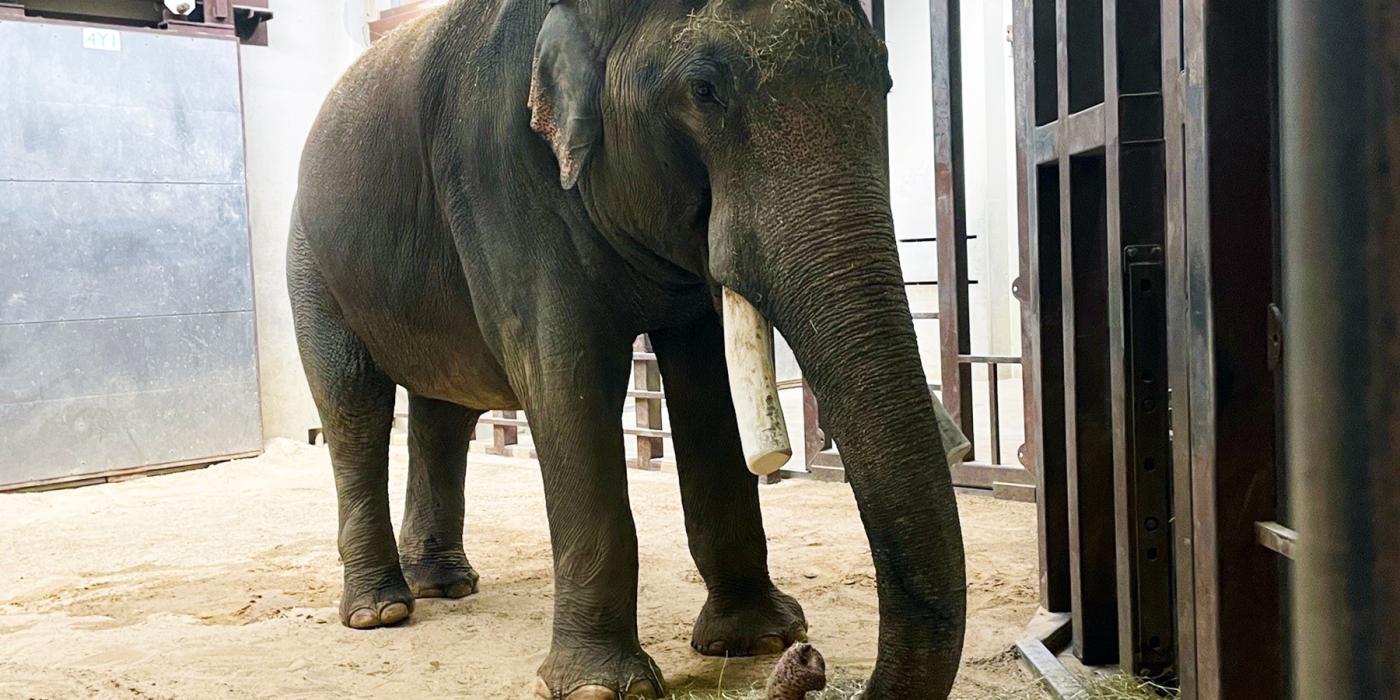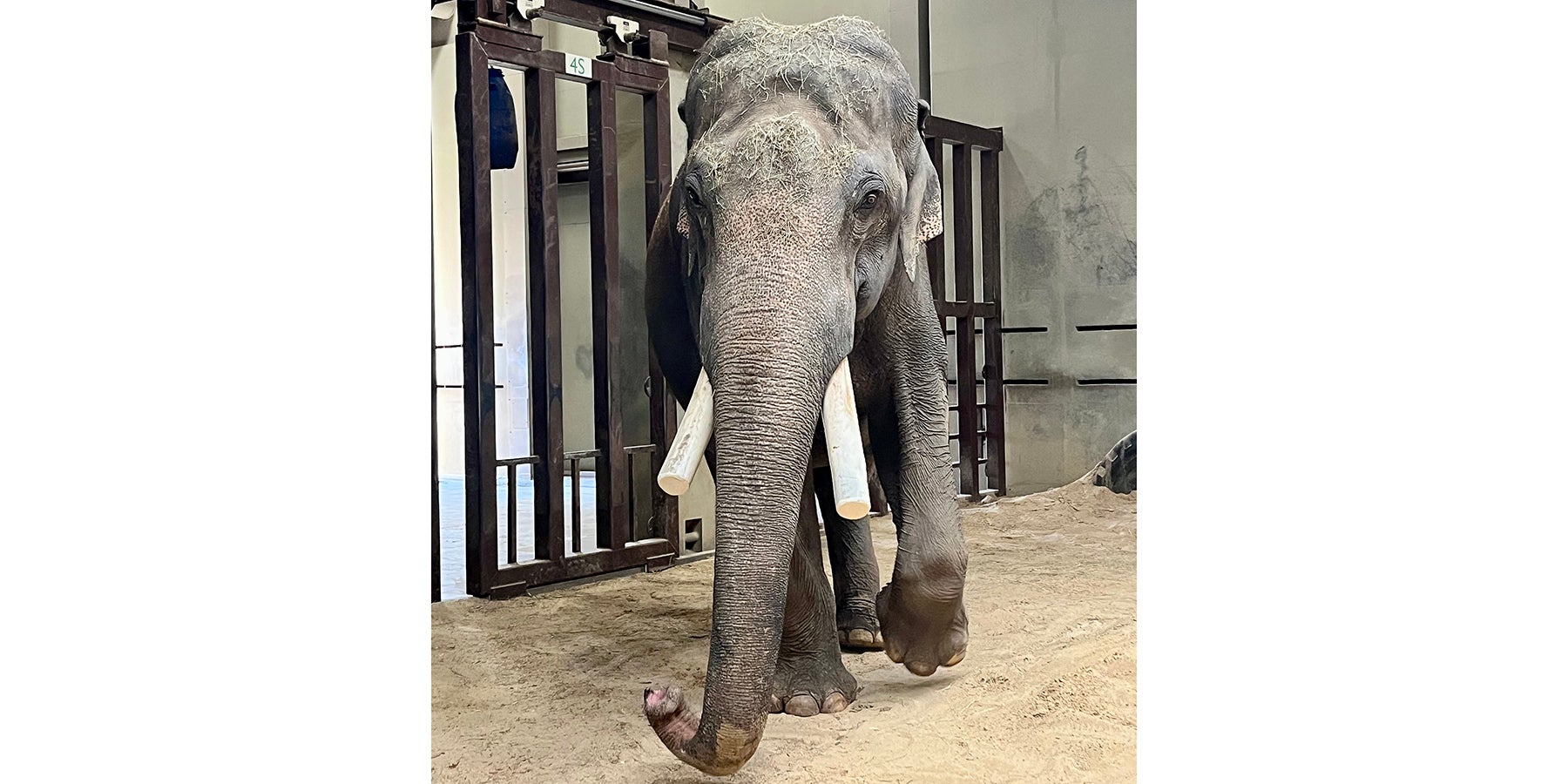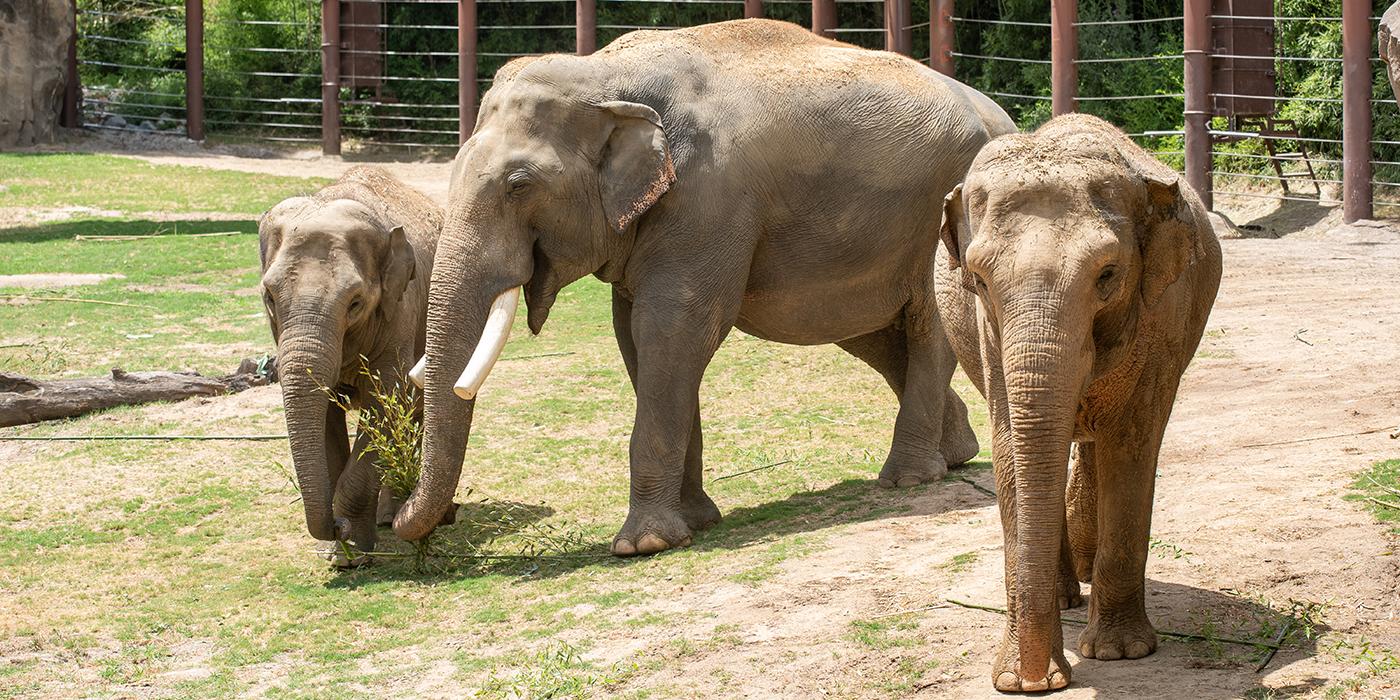How Do You Trim An Elephant’s Tusks?


If you’ve visited Elephant Trails in the last few weeks, you may have noticed that our male Asian elephant, Spike, looks a little different. That’s because the 42-year-old bull recently underwent a routine tusk trim.
When Spike first arrived at Smithsonian’s National Zoo and Conservation Biology Institute in March 2018 from Busch Gardens Tampa, the visible portion of each tusk was about two feet long. In just 5-and-a-half years, both had doubled in length to about four feet.
Before he came to our Zoo, Spike had a history of breaking his tusks through normal, everyday use. Recently, keepers noticed that his tusks seemed to get in the way of his everyday activities. In particular, he seemed to have some difficulty getting into the correct position during training sessions, which are critical for monitoring Spike’s health. For example, he must line up along the barrier so keepers can conduct blood draws or give him a pedicure. A broken tusk can sometimes split up the tusk and impact the pulp cavity. This can be very painful and risks associated serious infections. Given his history—and out of the abundance of caution—we decided to trim them down to the length they were when he first arrived.
Prior to trimming, radiographs of each tusk were taken to locate the pulp cavity portion of his tusks. This was critical because this area contains nerve endings and blood flow. Elephants have quite a bit more tusk that is not visible in the sulcus area. As expected, Spike’s pulp cavity was up near the sulcus in both tusks. Once we established that, we were confident we could cut Spike’s tusks around the two foot mark without issue.
The procedure took place Dec. 6. Once our veterinary team sedated Spike and he was properly positioned, we used a reciprocating saw to make one clean cut in each tusk. To round out the edges, we buffed them with a special grinder. From start to finish, the entire procedure took about two hours.
Today, his 9.6-foot-tall, 13,000-pound frame is a little lighter. Together, the pieces of tusk we removed weigh a little over 40 pounds and measure between 16 and 17 inches in circumference. They are safely stored in a secure location while we wait to hear what Zoo Miami—the facility where Spike is on loan from—would like us to do with the ivory.
Meantime, Spike heads into the New Year with a new look, which has already drawn interest from his female companions! We hope you’ll come to the Zoo this winter to meet him and females Trong Nhi, Nhi Linh, Bozie, Kamala, Maharani and Swarna.
Want to meet the other elephants in the Zoo’s herd? Get to know Trong Nhi and Nhi Linh in this update from keepers Rebecca Riley and Ashley Fortner.
Related Species:



